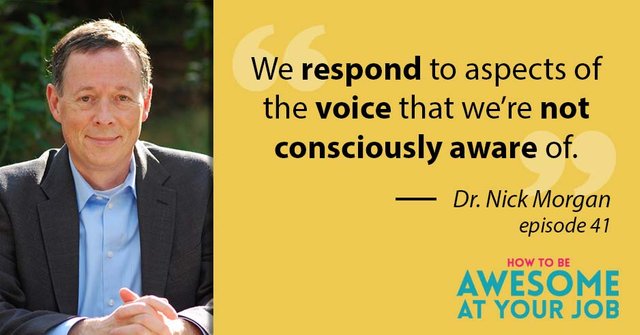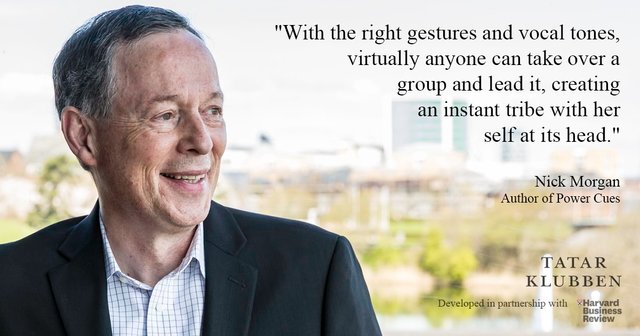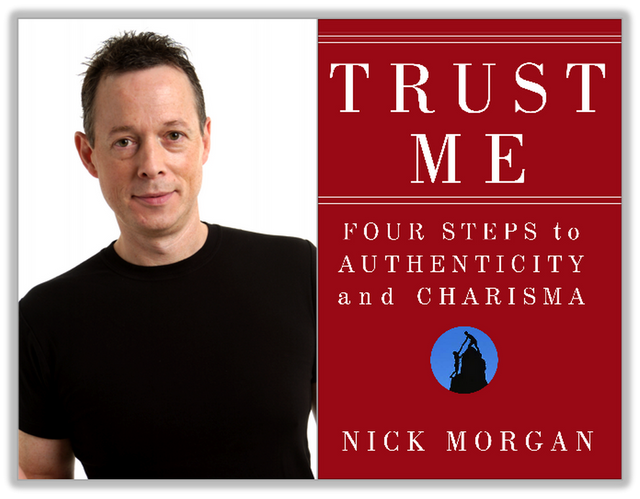The man could tame a lion with his voice
“What we say is important… for in most cases the mouth speaks what the heart is full of.”
Jim Beggs
The man could tame a lion with his voice.
Its tone lies somewhere between a sultry baritone and a commanding base. His words, carefully selected, flow effortlessly into each other. As he speaks, people listen.
We listened.
Once I was lucky enough to be at Nick's Morgan lecture. Nick Morgan, for reference, is the author of Power Cues, the founder of Public Words, and one of the most respected communication coaches in the world. Over the course of our lecture, he pushed us to reimagine our speaking style.
Two hours, however, passed quickly. So, as he stood up to leave, we had a final queston:
How could we keep learning? What were our next steps?
Nick gave us a couple of books to check-out (most notably, his newest book Power Cues). But, a few days later, I received an email. Public Words was coming out with an online course: Presentation Prep, 10 Steps to Persuasive Storytelling. If, I wanted, I could test the beta-version of the course.
After trying the program, I’ve felt myself grow deeply as a speaker. Storytelling is hard. But, with Nick’s guidance, it becomes quite a bit easier
For now, here are 5 big take-aways from the course.

https://awesomeatyourjob.com/041-developing-a-powerful-presence-with-dr-nick-morgan/
1. Tailor your speech to your audience size
As Nick Morgan explains, “When it comes to audience size, bigger isn’t better, but, it is different.” Nick argues that all audiences want the same thing: interactivity, entertainment, and a story. So, if your audience is larger than expected, don’t reduce the interactive part of your speech. Instead, make it more pronounced. Larger audiences are like large boats: unwieldy. But, if you are energetic, articulate, and level-headed, you can use the same interaction you did with a smaller group.
On the other hand, if there are fewer people than expected, throw out the
prepared remarks. As Nick explains “Audiences can get uncomfortable if they think they’ve decided to attend a presentation where few other people show up…
2. Practice your elevator pitch
Until you can condense your speech into 20 seconds or less, it isn’t clear enough. To ensure your thesis is clear, create an elevator pitch before the presentation. The elevator pitch should be one sentence. It should contain a benefit for the audience. And, it should only have one idea. Use your elevator speech to clarify the core idea you’re trying to present.

http://www.publicwords.com/dr-nick-morgan/
3. Understand Maslow’s hierarchy of needs
How important is your speech to the audience? How much do they need to listen?
As Nick Morgan explains, “ Abraham Maslow developed a hierarchy of needs that has stood the test of time. Maslow described a pyramid with physiological needs at the bottom, followed by safety, social needs like love and belonging, ego needs like esteem, and self-actualization.” Basically, we have to fulfill each of these needs in order. If we aren’t safe, we’ll be unable to focus on needs like esteem or self-actualization.
Focus your speech on the bottom of Maslow’s hierarchy. The more base the need is, the more your audience will listen. When writing your speech, take a few minutes to reflect; what need does my speech fulfill?
4. Pitch the speech to the majority of the room
How detailed should your speech? If your topic is technical, what level of specificity do you want? As Nick explains in Presentation Prep: 10 Steps To Better Story Telling, you should speak to the majority of the room. If there are mostly experts, feel free to use jargon. But, if your audience is dominated by laypeople, then give them the basics.
Think about who your audience is before you present. In doing so, you’ll better understand what content is useful. Sometimes it’s difficult to remember what people outside your field do and don’t know. Test your speech on a friend. Then ask them what phrases or concepts weren’t clear.

https://www.ducttapemarketing.com/trust-me-four-steps-to-authenticity-and-charisma/
5. Tell a story
Our brains have a limited ability to retain information. Without structure, we forget 70-90 percent of everything we hear.
That’s where stories come in. As Nick Morgan explained, “If… you tell your audience a story, you get to jump right into the deeper parts of their brain, where emotion and memory work together, the hippocampus and amygdala. They hear your words differently, because they compare them with stories they’ve heard before and log them in along with The Lord of the Rings, Iron Man 3, and Bambi.”
Every speech needs to be a story. If you’re talking about a product, create a story of helping a customer. If you’re talking about your research, show how it could impact the lives of others. Make every speech a story and you’ll inspire people to join your cause.
Nick Morgan changed how the Franklin Fellowship speaks. Now, he’s trying to change how the world does.
The man could tame lions with his voice. Perhaps its time YOU gave him a listen.

